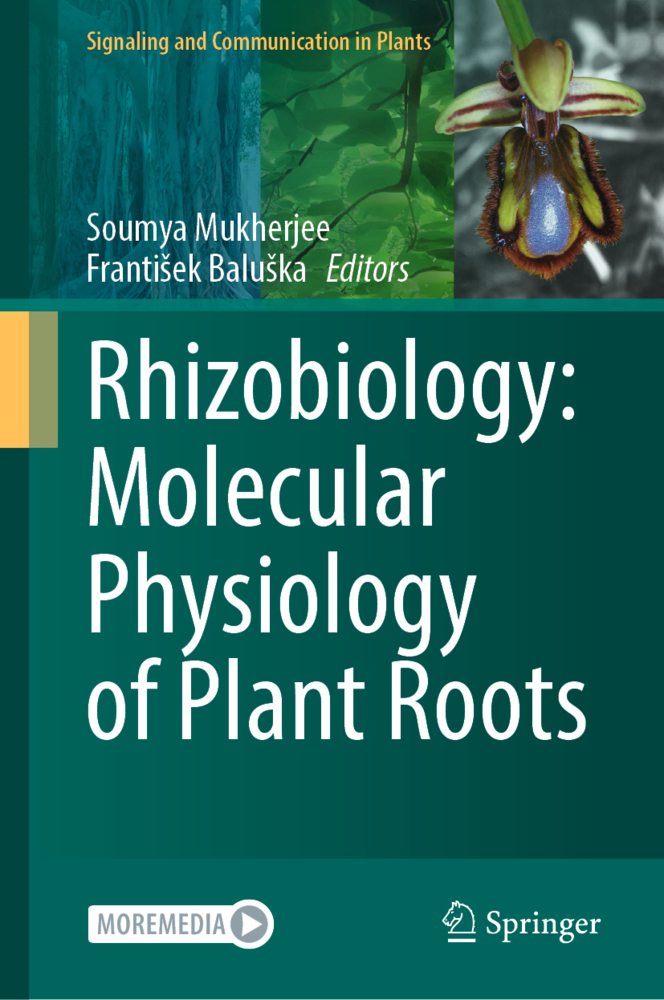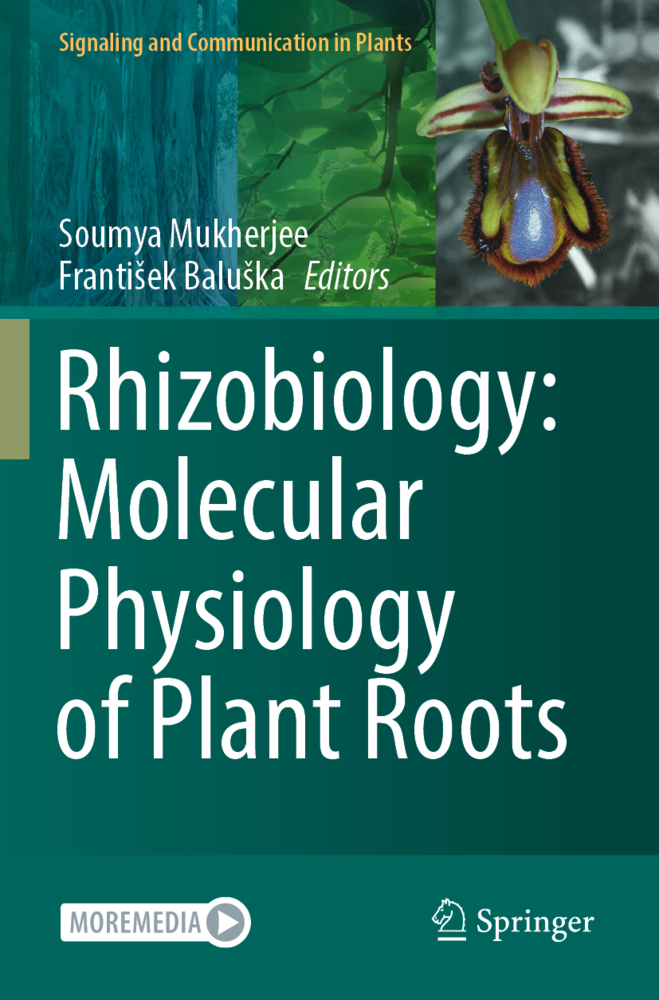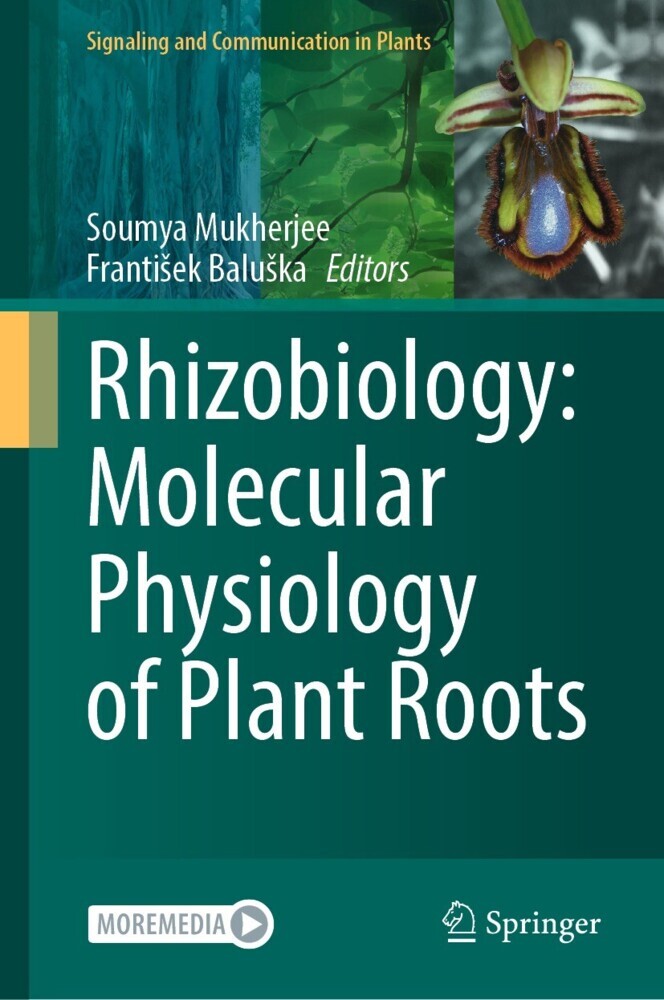Rhizobiology: Molecular Physiology of Plant Roots
Rhizobiology: Molecular Physiology of Plant Roots
This book discusses the recent advancements in the role of various biomolecules in regulating root growth and development. Rhizobiology is a dynamic sub discipline of plant science which collates investigations from various aspects like physiology, biochemistry, genetic analysis and plant-microbe interactions. The physiology and molecular mechanisms of root development have undergone significant advancements in the last couple of decades. Apart from the already known conventional phytohormones (IAA, GA, cytokinin, ethylene and ABA), certain novel biomolecules have been considered as potential growth regulators or hormones regulating plant growth and development. Root phenotyping and plasticity analysis with respect to the specific functional mutants of each biomolecule shall provide substantial information on the molecular pathways of root signaling.
Special emphasis provides insights on the tolerance and modulatory mechanisms of root physiology in response to light burst, ROS generation, agravitrophic response, abiotic stress and biotic interactions.Root Apex Cognition: From Neuronal Molecules to Root-Fungal Networks and Suberin in Monocotyledonous Crop Plants: Structure and Function in Response to Abiotic Stresses" are available open access under a Creative Commons Attribution 4.0 International License via link.springer.com.
Chapters "Root Apex Cognition: From Neuronal Molecules to Root-Fungal Networks and Suberin in Monocotyledonous Crop Plants: Structure and Function in Response to Abiotic Stresses" are available open access under a Creative Commons Attribution 4.0 International License via link.springer.com.
Root apex cognition: from molecules to root-fungal networks
Root architectural plasticity in changing nutrient availabilityMolecular physiology of nitrate sensing by roots
Root zones work in concert in exploring heterogeneous environments and conferring tip growth
Role of Arbuscular mycorrhizal fungi in root development with a new dimension in the root web network
Ally or foe: Role of soil microbiota in shaping root architecture in plants
Role of miRNAs in shaping root architecture in higher plants
Rooting the right way: The role of glucose signaling in regulating root development in plants
Plant hormonal crosstalk: a nexus of root development
Dynamic pool of nitric oxide in rhizosphere modulates root architecture, nutrient acquisition and stress tolerance in plants
Role of nitric oxide as a double edged sword in root growth and development
Role of plant auxin and their interplay in root development
Interaction of cytokinin and ethylene in the regulation of primary root growth and development
Role of brassinosteroids in root growth and development
Precise role of strigolactones and its crosstalk mechanisms in root development
Crosstalk of Jasmonates with phytohormones accompanying root growth, development and microbe-interaction
Jasmonates: A thorough insight into the mechanism of biosynthesis, signaling and action in root growth and development
Serotonin and Melatonin: Role in rhizogenesis, root development and Signaling
Suberin in monocotyledonous crop plants: structure and function in response to abiotic stresses
Hitting hard times: Effect of abiotic stress on root physiology
An approach in updating plant metabolomics in roots to tolerate anaerobic submergence stress
Role of heavy-metal resistant bacteria isolated from rhizosphere in bioremediation and plant development
Understanding the regulation of root development towards crop improvement towards environmental stresses
In vitro biosynthesis of natural products inplant roots.
Mukherjee, Soumya
Baluska, Frantisek
| ISBN | 978-3-030-84984-9 |
|---|---|
| Artikelnummer | 9783030849849 |
| Medientyp | Buch |
| Copyrightjahr | 2021 |
| Verlag | Springer, Berlin |
| Umfang | IX, 500 Seiten |
| Abbildungen | IX, 500 p. 70 illus., 52 illus. in color. |
| Sprache | Englisch |








